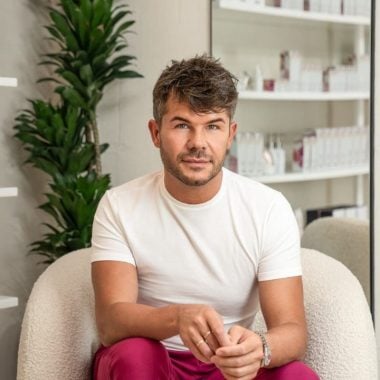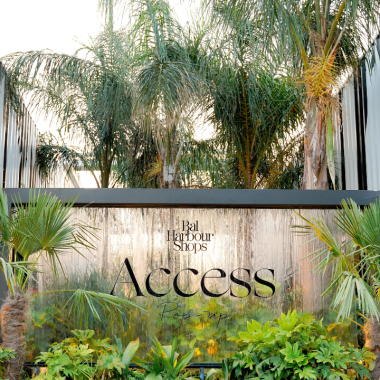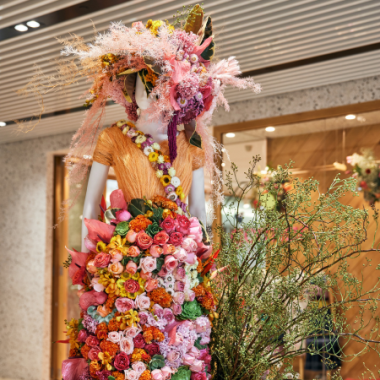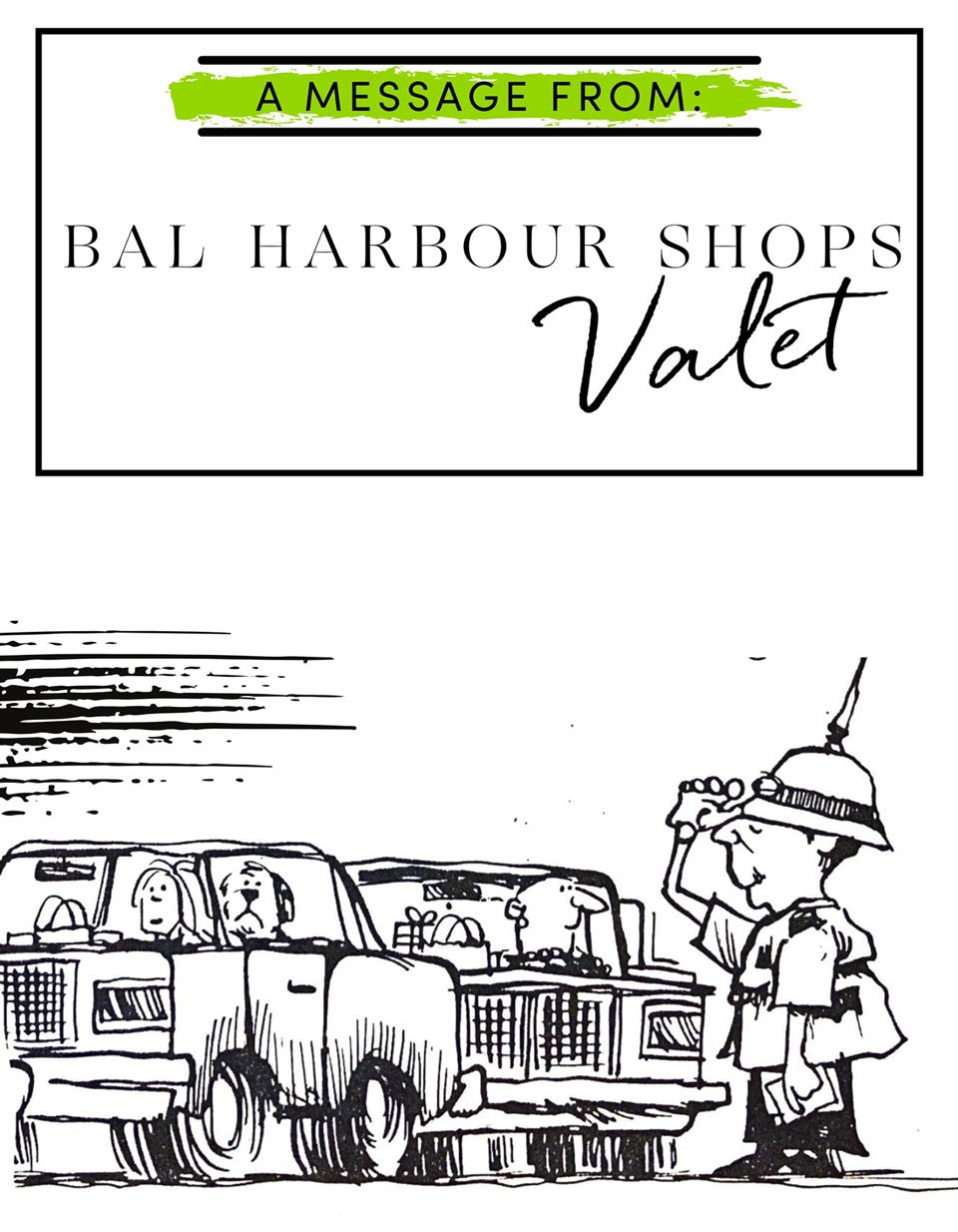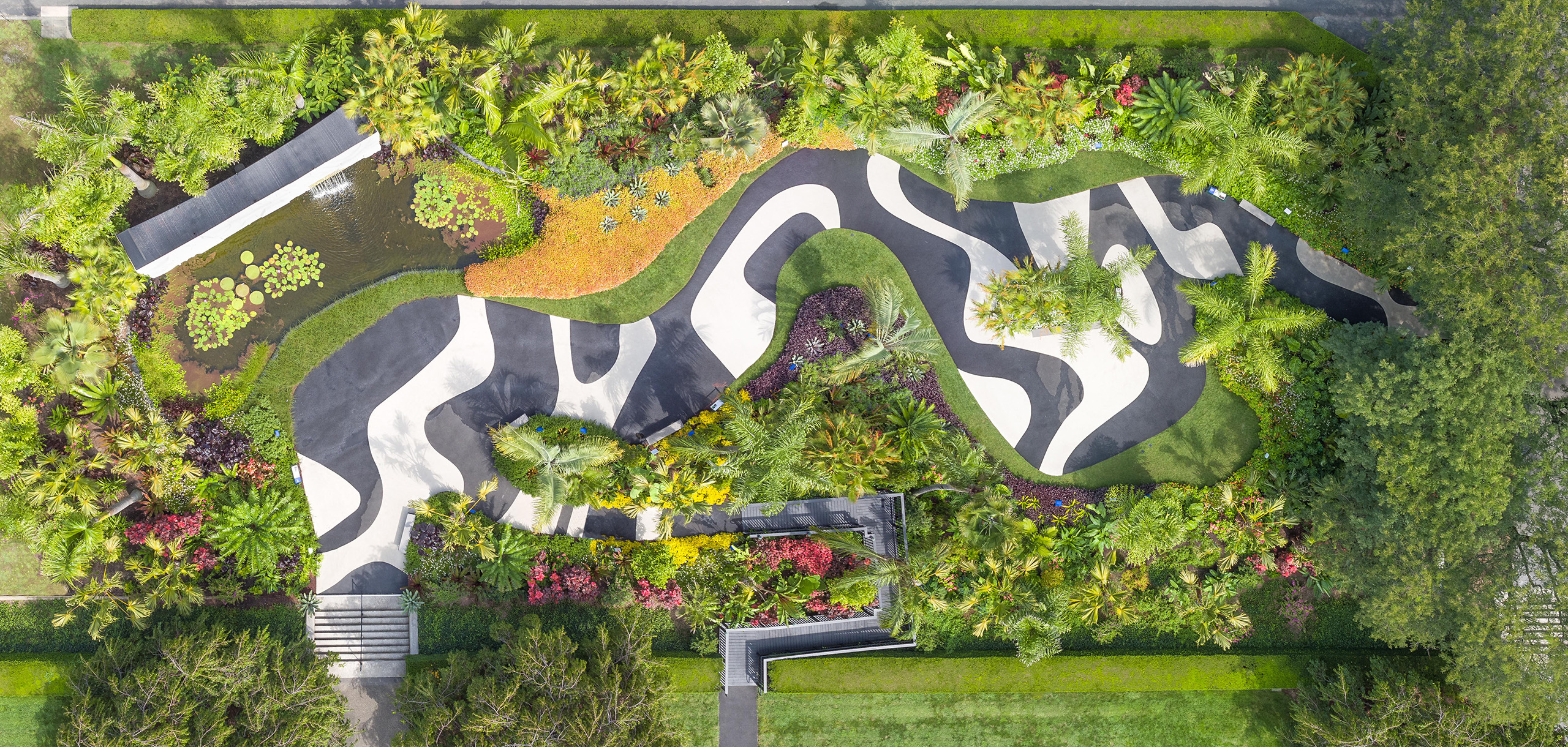
Raymond Jungles designed the entrance to the New York Botanical Garden’s 2019 exhibition, “Brazilian Modern: The Living Art of Roberto Burle Marx.”

Raymond Jungles in his Coconut Grove studio.
Sixty-six-year-old landscape architect Raymond Jungles is at the pinnacle of his profession. Sought after around the world for his exuberant gardens chock full of native plants, his eponymous firm has dozens of projects in the works at any given time, ranging from billionaires’ properties to public parks, in his hometown of Miami and as far away as China. But when the pandemic lockdown put life on pause in March 2020, Jungles did what comes naturally to him; he grabbed a shovel and started digging up the yard of his own house, which had been languishing because he was always so busy doing other people’s gardens that he never had time to work on his own. “I’m a maker, I’m a doer,” he says. “I like to see things built.”
Jungles acquired some of those hands-on skills as a teenager. Born in Omaha, Nebraska, he was an outdoorsy kid who liked to hike, go camping and, until he discovered girls in adolescence, dreamed of being a mountain man and living off the land. By the time he was in high school, his family resided in Columbus, Ohio, and he got a part-time job at a nursery where he learned how to dig, ball and burlap trees. After graduation, he was on a crew clearing brush from railroad tracks with chainsaws and bush axes.
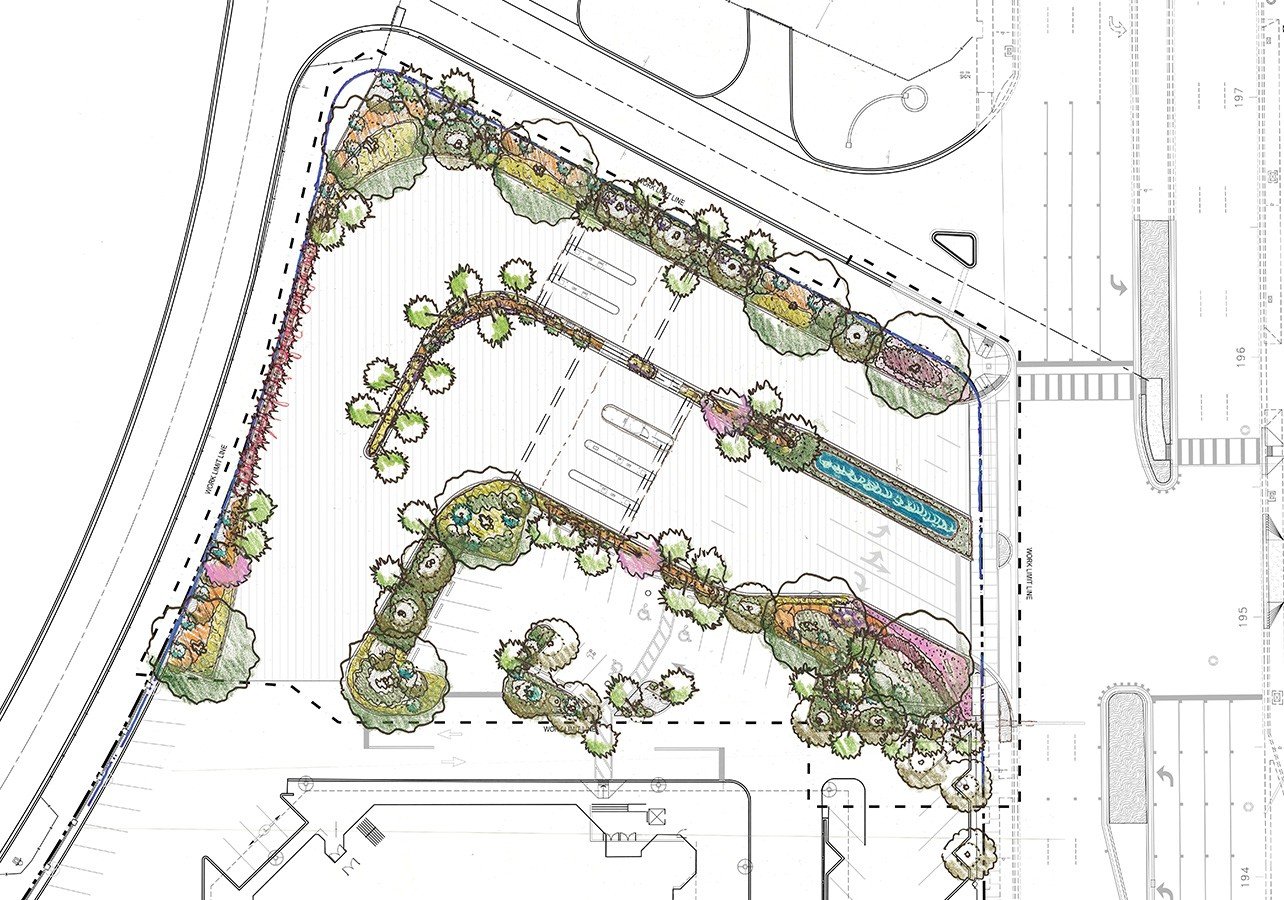
A detail from Jungles’s plans for the Bal Harbour Shops expansion, which includes extensive native foliage.
Moving to Miami—a “sleepy” town when he arrived in 1974—he liked being close to the ocean and the Everglades. “I loved the green all year,” he recalls. “The sky and the clouds are amazing.” In between working as a landscape laborer and lifeguarding on the beach, he enrolled at a community college, and when he had to write a paper about a profession for a class, he picked landscape architecture. Soon he was getting his degree in it at the University of Florida at Gainesville.
There, he learned about the Brazilian modernist Roberto Burle Marx, famed for landscapes with sinuous forms and masses of plants, and fell under his sway. When Burle Marx gave a lecture on campus, Jungles wrangled an invitation to visit the master at his home in Rio de Janeiro (now a UNESCO site). He would return there again and again to watch Burle Marx at work and accompany him on plant-finding expeditions. When Burle Marx came to Miami, he would stay with his young protégé, often visiting Jungles’s job sites and making suggestions.
At first, Jungles had a design-build firm, which meant he installed the gardens he designed. He wore multiple hats—drafting proposals, picking plants at nurseries, driving a backhoe on job sites—and could only manage a small handful of projects every year. But some of his early projects were published, which meant word of his talent began to spread. Soon he had enough work that he could focus on design while others did the installation.
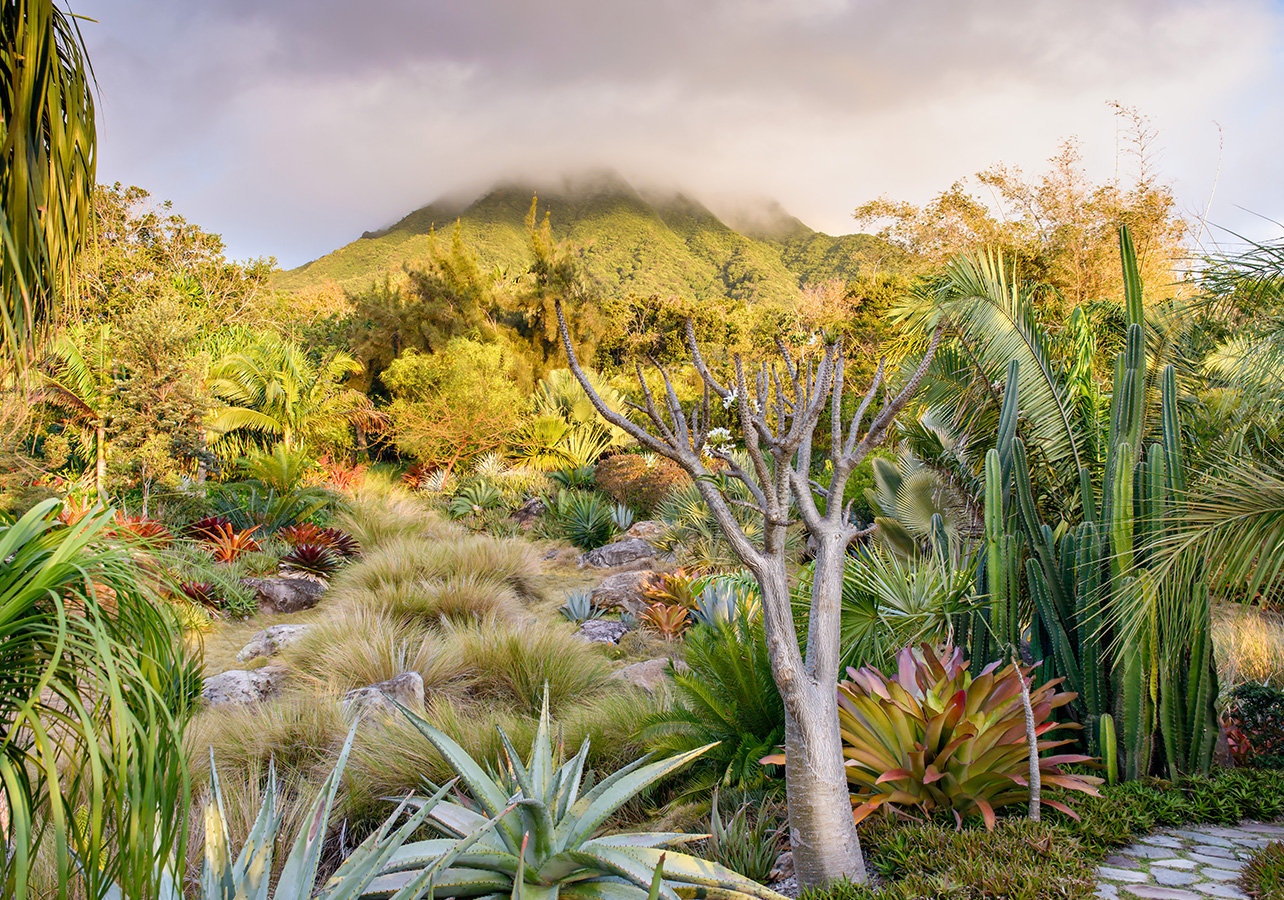
Golden Rock Inn, a centuries-old sugar plantation in Nevis, boasts relaxed vegetation soaked in ethereal light.
His business really took off in the early aughts, by which time Miami was becoming the sophisticated international city it is today. Developers were hiring starchitects to do condominium and hotel projects and some tapped Jungles to be part of their design teams. It was like “someone pulled a cork out of the bottle,” Jungles says.
He uses the same approach whether he’s starting with a clean slate (as is the case for Bal Harbour Village’s new waterfront park and town hall,) or refining an existing landscape (he’s a longtime consultant for Bal Harbour Shops, swapping native plants for ones already in place and has been helping plan for the Shops’ expansion for the last 10 years.) First comes a clean, sculptural “hardscape,” which is what landscape architects call manmade features like walls and paths. Native plants are added in profusion because they grow well in the local climate, without requiring lots of pruning and other finicky maintenance, and they also provide habitats for birds, bees and other wildlife. His goal: a landscape “as close as possible to what was there before humans ripped everything out.”
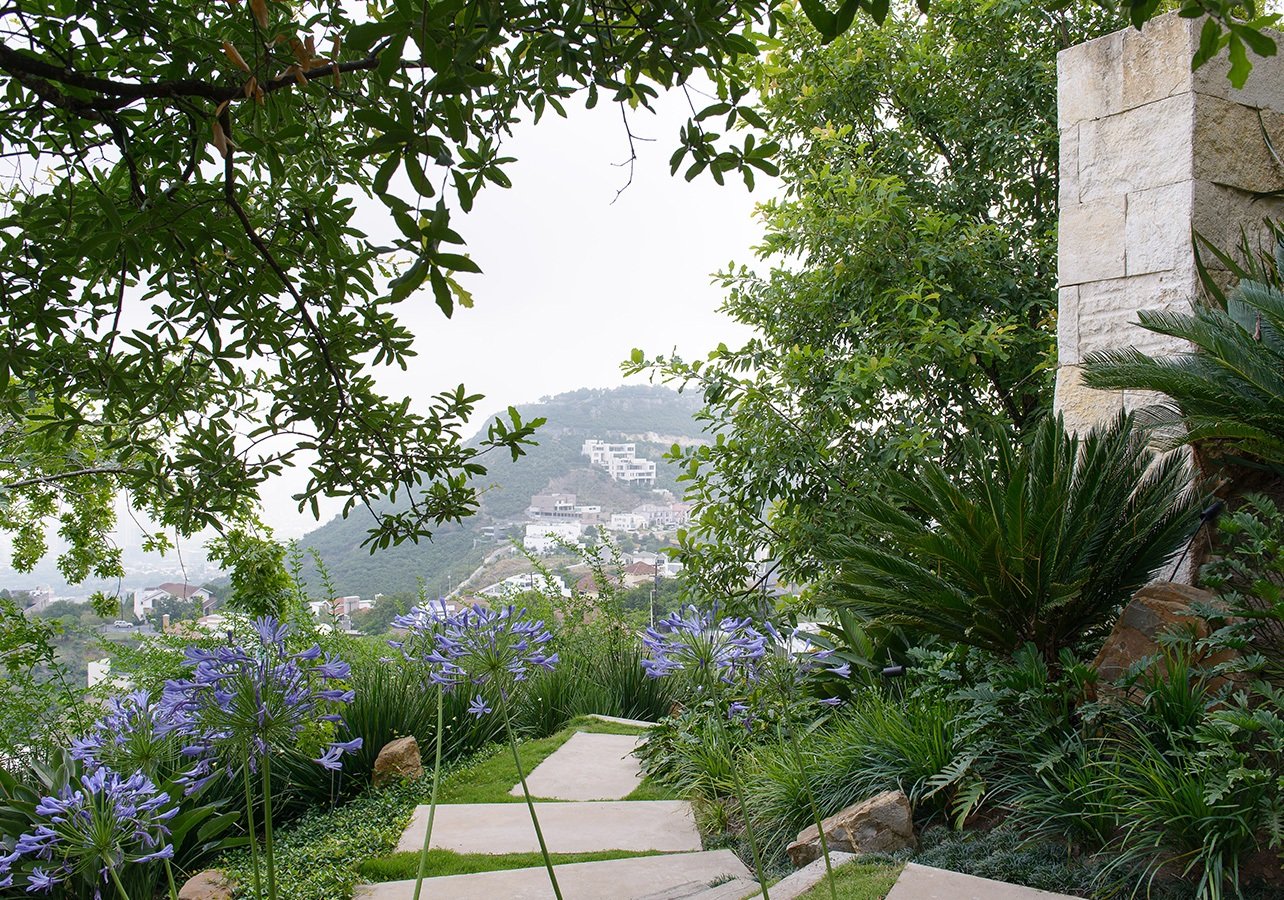
Ventana de la Montaña in Monterrey, Mexico takes its name from the commanding mountain vistas.
His emphasis on native plants has been influential. Miami is still filled, in Jungles’s opinion, with too many mow-and-blow landscaping crews and homeowners who think sophistication means pruning plants into tortuous shapes. But the city also has a thriving native plant industry today. “I like to think I’m part of the change,” he says.
Jungles and his staff of about two dozen work out of a four-story building in Coconut Grove that he bought and gutted in 2016. His wife, Gina Jungles—an interior designer and a principal in Raymond Jungles, Inc.—brought in clean-lined, white-upholstered seating and other furnishings that focus attention on the greenery visible through large windows. Jungles works standing at a drawing table, looking out at a live oak tree that is part of the extensive landscaping the firm did, not only around the building but up and down the block.
Jungles was similarly unconstrained by property lines at his nearby house, which was designed by Arquitectonica and is painted a charcoal color so that it recedes behind its forest of native trees. He took pains to landscape the street side of the property and also portions of the historic Commodore Trail. Jungles has no intention of stopping there, either. “I have the habit of improving wherever I can.”

